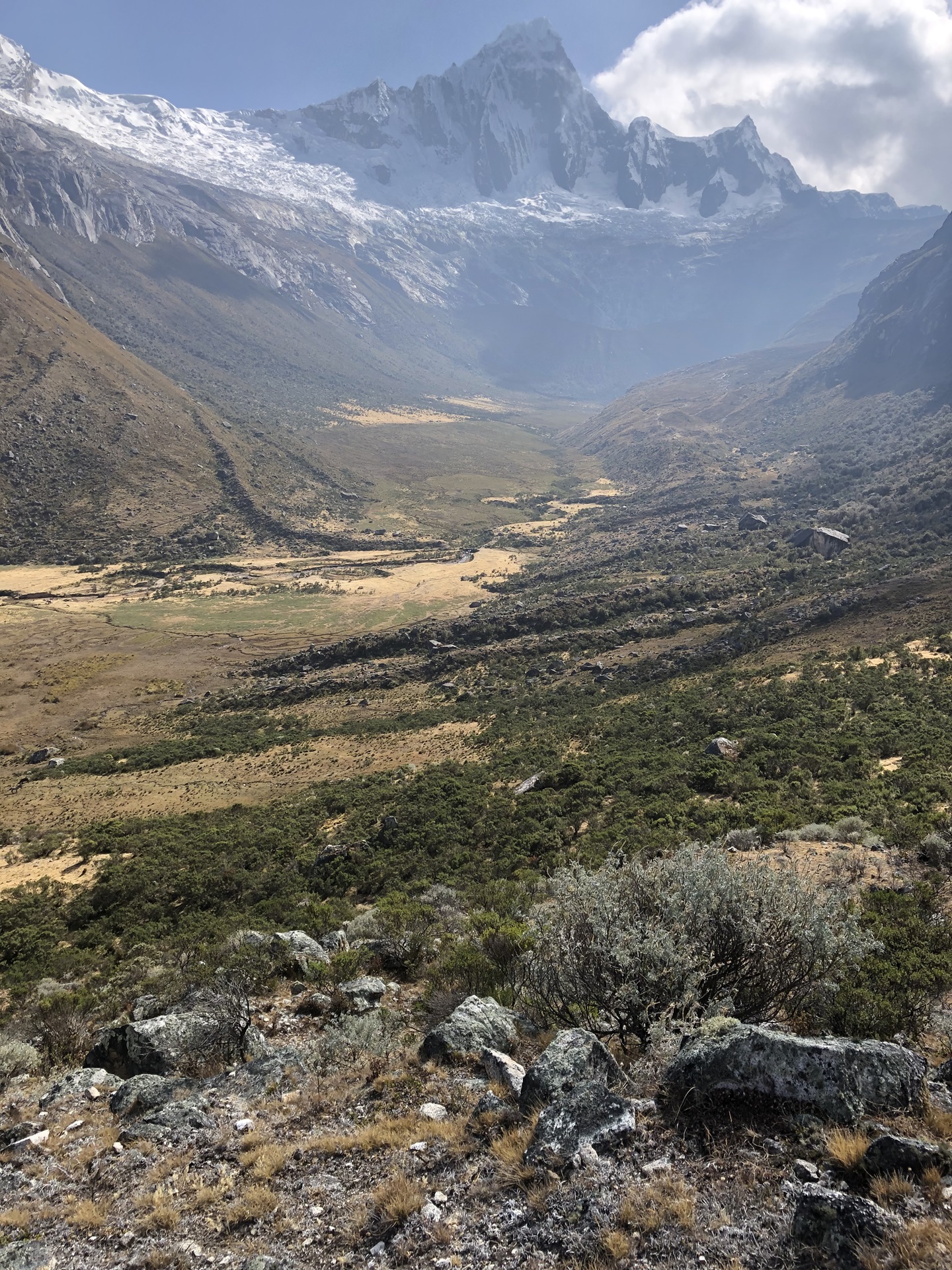Study of glaciers in the Andes sheds light on future climate impact

The Upper Santa Cruz Valley in Peru, showing darker ridges of moraines that were left behind as the glaciers receded.
22 September 2025
Andean glaciers advanced during an acute period of climate change at the end of the last Ice Age, new research has found.
An international team of glaciologists, led by Aberystwyth University, made the discovery as part of a new project into tropical glaciers in Peru. The finding challenges long-held assumptions about glacier behaviour during this period.
The findings, published in ‘Nature Scientific Reports’, shed new light on how glaciers respond to shifting climate patterns and may help improve predictions of future climate impacts.
The study focused on the Younger Dryas period, a time of sudden and dramatic climate change that occurred approximately 12,900 to 11,700 years ago. Contrary to previous theories, which suggest that glaciers in this area of Peru retreated during this time, the researchers found that those in the Santa Cruz Valley of Peru actually grew.
The glaciologists believe that this advance was driven by increased snowfall linked to seasonal shifts in the Intertropical Convergence Zone - a belt of low pressure that moves between the hemispheres and influences tropical weather patterns.
To reach their conclusions, the research team dated boulders transported and deposited by glaciers in the Santa Cruz Valley, Peru. Once deposited, these boulders serve as physical evidence of glacial movement over millennia and provide valuable insights into historical climate conditions.
Lead author Professor Neil Glasser from Aberystwyth University is a glacial geomorphologist who researches glacier change in southern South America. He said:
“Our study suggests that snowfall was a key factor driving glacier growth in the tropical Andes during the Younger Dryas. Unlike many other glaciers, the glaciers in this part of the Andes do not calve icebergs, where large sections of ice detach. They also lack heavy debris cover, making them especially well-suited for reconstructing past climate conditions. We were also able to date the timing of their advances more precisely than ever before.
“Our study shows that these glaciers are highly sensitive to climate shifts, particularly changes in precipitation patterns. Understanding the history of glacier advance and recession is really important because it helps us better anticipate how these glaciers will respond to future warming. This is especially important in Peru, where the glaciers are a source of fresh water for drinking, sanitation and irrigation of crops.”
The study was a collaborative effort involving researchers from the UK, Italy, Canada, and Peru.



